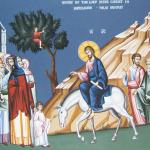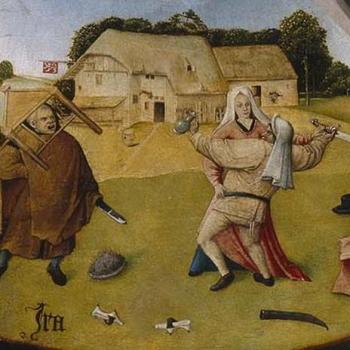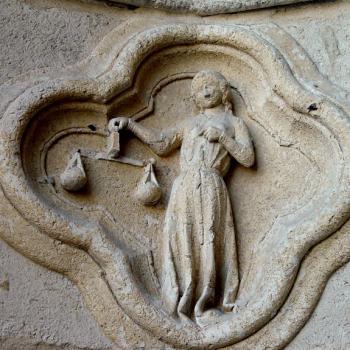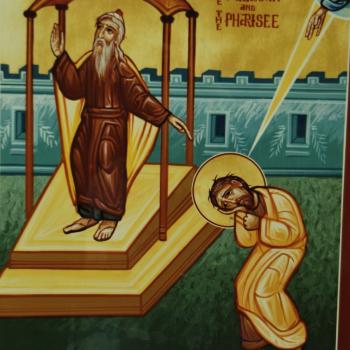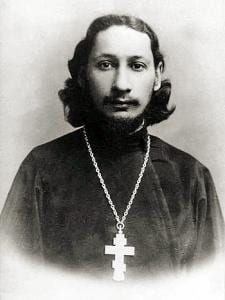
Those who study Christian history should be able to see how the church, when it properly follows the lead of the Holy Spirit, looks for ways to meet the needs of the faithful, to make sure they are spiritually blessed. The church does this by taking whatever good it finds in the natural order and showing how it has a place for it in the Christian faith. It takes the good it finds and implants in it the grace, so that the good becomes transformed as it becomes something greater than it was before. Even when it finds some natural goods mixed with error and injustice, it should find a way to appreciate those goods, promoting them because they are good. It should not destroy what is good, for that is what sin does. Thus, it should find a way to take any defiled good, cleanse it from that defilement, and then set it free so it can attain its proper end. The problem is that Christians often only see the sin, not the good which is behind the sin, so that instead of purifying what should be promoted, they end up denying even the good, harming those who are naturally attracted to and can be saved by that good.
Pavel Florensky, the great Russian Orthodox theologian-scientist-martyr (and saint), recognized one such good in the close bonds and love which can be had by friends (of the same sex). It is a love which he believed could bind people together, making the two, one, similar to the way marriage makes a husband and wife one. It is a bond which he thought was found naturally in society but which also found a “sacramental” realization in the church when it institute its own ceremonies which spiritually bound two friends together. The natural form often had its own rituals and acknowledgments, such in the way two friends could become “blood-brothers,” where they made vows and shared blood with one another; the ecclesial (or grace-filled) form of this elevates what is found in nature and makes it greater, so that the two friends become spiritually one as they share the body and blood of Christ together:
Traditionally, there have been two such reinforcements of friendship: (1) the “natural sacrament” (may the reader forgive this inappropriate combination of words) of the pledging of brotherhood; and (2) the grace-giving office of adelphopoiesis, akolouthia eis adelphopoiesin or eis adelphopoiia, which grew out of this “sacrament” as from a fruitful natural soil. [1]
Thus, Florensky said, there is a way that two close, loving people can be joined together and blessed by the church. The two made their commitment to each other before the church, and before Christ, as they received the “brother-making” (adelphopoiesis) ceremony which took their friendship, and the love held in that friendship, and reinforced it with grace. Because the natural form of this rite existed first, and was elevated by the church, it was important to point out what he saw was the essence of the natural rite:
Let me only note that the pledging of brotherhood consists, in essence, of a real unification through an exchange of blood and names (and sometimes even an exchange of shirts, clothes, and weapons), or through co-partaking of sacred food, a vow of faithfulness, and a kiss. [2]
Christianity transformed the rite, taking and adapting what it had been given but making it something richer, greater, by imparting grace to it:
On the other hand, in the office of adelphopoiesis, the exchange of blood and co-partaking of sacred food are replaced by Holy Communion, by the co-partaking of the Blood of Christ, while the exchange of names is replaced by the exchange of crosses, which corresponds to the exchange of Christian names. The half-ecclesiastical, half-popular rite of adelphopoiesis is accomplished through an exchange of crosses, a vow of brotherly love and faithfulness before an icon in church, and by the brothers alternately holding a burning candle during the Cherbuic Hymn. [3]
Florensky saw a connection to this rite of “brother-making” with marriage. In marriage, it is husband and wife who are made one, but with the brother-making rite, it is two beloved friends who find grace uniting them together so that their mutual love can be affirmed by the church:
Just as agapic love must be accompanied by philic love, which is irreducible to but inseparable from agapic love, so liturgical offices of the agapic and philic unions, which are irreducible to each other, must coexist. And it is clear that, just as the two forms of love are analogous to each other, so the corresponding rites of the communal liturgy and of adelphopoiesis are also analogues. [4]
Scripture, he said, was filled with such passionate love between friends, that it would be hard for Christians to deny it grace. He believed that the love held between David and Jonathan represented one of the greatest examples of this love in history:
The Bible also shows the realization of this ideal friendship in living reality. I have in mind the extremely touching friendship of David and Jonathan, depicted in just a word words, but for that reason almost painfully touching: “Written as if for me,” everyone thinks. [5]
Likewise, Jesus sent out the disciples two by two, because he found and saw their inner connection and recognized that if they were connected with a common bond in their mission, they would be greater together in the unity of that bond than they would be if they were sent out as mere individuals:
Thus, the knowing of mysteries, i.e., the inward-directed bearing of spirit (like the doing of miracles, i.e., the outward-bearing of spirit, or more briefly, the bearing of spirit in general), is based on the abiding of the disciples two by two. “Two” is not “one plus one,” but something essentially greater, something essentially more manifoldly significant and powerful. [6]
When the bonds between friends grow and are strengthened by love (and grace), then they find themselves merging so that they act and think often as one: “Being united thus, by their essence, and forming a rationally unknowable duality-unity, friends enter into a unity of feeling, will, and thought that completely excludes divergence of feeling, will, and thought.” [7] Similar to the way a husband and wife come together and share all that they have, such friends share all things together: “The interests of friends merge. The property of one becomes the property of the other, and the good of one becomes the good of the other.” [8] The two, likewise, can and often have physical affection for each other:
It is necessary not only to “love” one another but also to be close together, to attempt, as much as possible, to come closer and closer to one another. But when are friends closest to each other, if not when kissing? The very word for “kiss” in Russian (potselui) is very close to the Russian word for “whole” (tselyi) and the Russian verb for “to kiss” (tselovat’sia) signifies that friends are brought to a state of wholeness (tselostnost’) or unity. A kiss is the spiritual unification of the persons kissing. [9]
And finally, the bond, once it is made, is, like marriage, indissoluble:
Faithfulness to a once-established friendship, the indissolubility of friendship, as strict as the indissolubility of marriage, firmness to the end, unto the “blood of the martyrs” – that is the fundamental commandment of friendship. And the whole force of friendship lies in the observance of this commandment. [10]
Thus, Florensky shows us that the church has recognized the close bonds of love that two people of the same gender can have for each other. It has found a way to affirm that love and bless it. Jesus, in sending out the disciples two by two, has affirmed what is found in nature, the possibility of a great, all-encompassing love between two such friends, and elevated it with his grace. This is similar to the way he saw the great love possible in a married couple and elevated it at the Wedding of Cana. The church, following Christ, can indeed bless that love, bless and affirm it, and historically has found ways to do so. It is therefore vital for the church to look at its own tradition and practices and us it today to creatively engage the concerns of Christians today, finding ways it can affirm the bond of love formed by two people, seeing the good of that love and promoting it for their salvation.
[1] Pavel Florensky, The Pillar and Ground of the Truth. Trans. Boris Jakim (Princeton: Princeton University Press, 1997), 327.
[2] Pavel Florensky, The Pillar and Ground of the Truth, 327.
[3] Pavel Florensky, The Pillar and Ground of the Truth, 327.
[4] Pavel Florensky, The Pillar and Ground of the Truth, 329.
[5] Pavel Florensky, The Pillar and Ground of the Truth, 299.
[6] Pavel Florensky, The Pillar and Ground of the Truth, 302-3.
[7] Pavel Florensky, The Pillar and Ground of the Truth, 312.
[8] Pavel Florensky, The Pillar and Ground of the Truth, 310
[9] Pavel Florensky, The Pillar and Ground of the Truth, 316.
[10] Pavel Florensky, The Pillar and Ground of the Truth, 318.
Stay in touch! Like A Little Bit of Nothing on Facebook.
If you liked what you read, please consider sharing it with your friends and family!



